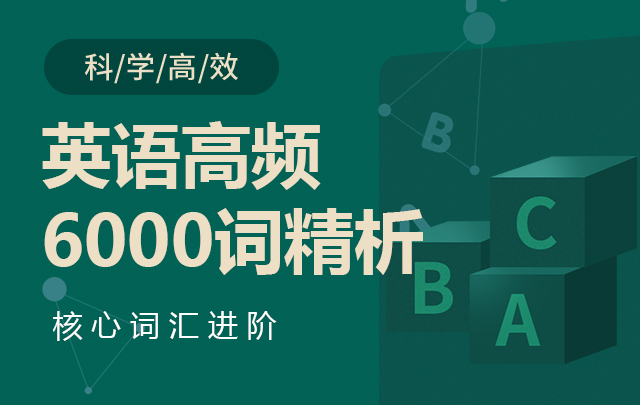New Treatments for Sickle Cell Remain Out of Reach for Many
新的镰状细胞病治疗方法对许多人来说仍然遥不可及。
【听力音频】
--------------------------------------------------------------------------
By Bryan Lynn
01 January 2024
United States health officials recently approved two new gene treatments for sickle cell disease (SCD). The treatments provide hope that the disease might be curable. But experts say high costs and limited availability will prevent many people from receiving them.
SCD is a genetic disorder that causes oxygen-carrying red blood cells in the body to become misshapen. The condition can block blood flow and cause severe pain and organ damage.
SCD is more common among Black Americans, Africans and Middle Easterners than other population groups. Many children with the most severe form of the disease die before age five, usually from an infection or severe blood loss.
Worldwide, the disease is believed to affect millions. It is known to be common in places with high cases of malaria, like Africa and India. Scientific research has shown that people who have SCD seem to react less severely when they are infected with malaria.
While an estimated 1 million people suffer with the condition in India, many of them will not get the chance to receive the new gene treatments. The situation is not new to developing countries. Many have long faced limitations on medicines and other treatment methods for disease.
But the problem is even more severe with the new SCD treatments and other gene-based methods. This is mainly because of the high cost of treatment. The two methods approved in the U.S. – both of which are given as a single treatment – cost between $2.2 million and $3.1 million.
In addition, the treatment itself can be difficult to carry out in developing nations. This is because the process generally involves several steps and requires longer stays in well-equipped hospitals.
Vertex's treatment, called Casgevy, is designed to repair the genetic condition that causes misshapen cells in sickle cell sufferers. It uses a gene editing technology called CRISPR to do so. The other treatment, offered by a company called Bluebird Bio, does not use CRISPR technology. But it requires a similar treatment process as Vertex's version.
Dr. David Altshuler is the chief scientific officer at Vertex. He told The Associated Press that while there is clearly a "great unmet need" for the new SCD treatments, the process also presents "challenges."
Altshuler said Vertex is working to simplify the treatment process to make it be available to more people. For example, his team is seeking to develop a medication in pill form that could perform similarly to the gene editing method.
But experts have warned that simpler treatments will likely still be too costly for many people. This has led to calls for governments and non-profit organizations to get involved to help provide financial assistance to patients.
Gautam Dongre lives in the city of Nagpur in central India. His two children suffer from SCD. He told the AP he has been "praying the treatment should come to us."
Dongre's son is now 19 years old and his daughter is 13. They both currently take a drug called hydroxyurea. That drug has long been used to help prevent the formation of sickle-shaped red blood cells in an effort to control pain and other damaging effects.
Dongre leads India's National Alliance of Sickle Cell Organizations. He said many patients in rural parts of India are dying at very young ages without getting effective treatment.
He added that if the gene treatments for SCD one day make it to India, he would like his children to be among the first to get them.
But Dongre noted that people in all countries – rich or poor – should be able to get the latest treatments available. "We are all part of one single planet," he said.
I'm Bryan Lynn.
The Associated Press reported this story. Bryan Lynn adapted the report for VOA Learning English.
--------------------------------------------------------------------------
作者:Bryan Lynn
2024年1月1日
美国卫生官员最近批准了两种新的镰状细胞病(SCD)基因治疗方法。这些治疗方法为这种疾病的治愈带来了希望。但专家表示,高昂的成本和有限的可用性将阻止许多人接受这些治疗。
SCD是一种遗传性疾病,导致体内负责携带氧气的红细胞变形。这种状况可以阻塞血液流动,导致严重疼痛和器官损伤。
SCD在黑人美国人、非洲人和中东人中比其他人群更常见。许多患有最严重形式的疾病的儿童在五岁之前死亡,通常是由于感染或严重失血。
全球范围内,据信有数百万人受到这种疾病的影响。在疟疾高发地区,如非洲和印度,这种疾病被认为很常见。科学研究已经显示,患有SCD的人在感染疟疾时似乎反应较轻。
尽管估计有100万人在印度患有这种疾病,但其中许多人可能无法接受新的基因治疗。这种情况在发展中国家并不新鲜。许多国家长期以来一直面临药物和其他疾病治疗方法的限制。
但是,对于新的SCD治疗和其他基于基因的方法,问题更为严重。这主要是因为治疗成本高昂。在美国获批的两种方法——都是作为一次性治疗给予的——成本在220万美元到310万美元之间。
此外,治疗本身在发展中的国家可能难以进行。这是因为这个过程通常涉及几个步骤,并需要在设备齐全的医院中长期住院。
Vertex的治疗方法名为Casgevy,旨在修复导致镰状细胞病患者细胞变形的遗传病症。它使用一种名为CRISPR的基因编辑技术来实现这一目标。另一种治疗方法由一家名为Bluebird Bio的公司提供,它并未使用CRISPR技术。但它需要一个与Vertex版本类似的治疗过程。
Vertex的首席科学官David Altshuler博士告诉美联社,虽然新的SCD治疗方法明显存在“巨大的未满足需求”,但这个过程也带来了“挑战”。
Altshuler表示,Vertex正在努力简化治疗过程,使其能够为更多人提供服务。例如,他的团队正在寻求开发一种药物,该药物可以以药丸形式提供,其效果与基因编辑方法类似。
但专家警告说,即使是更简单的治疗方法,对许多人来说可能仍然过于昂贵。这导致人们呼吁政府和非营利组织介入,为患者提供财务援助。
Gautam Dongre住在印度中部的那格浦尔市。他的两个孩子都患有SCD。他告诉美联社,他一直在“祈祷治疗方法能够来到我们身边”。
Dongre的儿子现在19岁,女儿13岁。他们目前都在服用一种名为羟基尿素的药物。这种药物长期以来一直被用来帮助防止镰状红细胞的形成,以控制疼痛和其他破坏性效果。
Dongre领导着印度的全国镰状细胞组织联盟。他说,印度农村地区的许多患者在非常年轻的时候就因为没有得到有效治疗而死亡。
他补充说,如果有一天SCD的基因治疗方法能够来到印度,他希望他的孩子能够成为首批接受治疗的人。
但是Dongre指出,所有国家的人——无论贫富——都应该能够获得最新的治疗方法。他说:“我们都是同一个星球的一部分。”
我是Bryan Lynn。
这个故事由美联社报道。Bryan Lynn为VOA学习英语改编了这份报道。
--------------------------------------------------------------------------
故事中的词汇
gene editing – n. 基因编辑,通过科学方法改变基因以预防或治疗疾病的过程
challenge – n. 挑战,测试一个人能力或决心的困难事物
本文关键字:
 免费试听
免费试听

时长 : 5:22 主讲 : 金格妃

时长 : 27:51 主讲 : 金格妃

时长 : 17:20 主讲 : 郭宁

时长 : 3:54 主讲 : 金格妃

时长 : 26:58 主讲 : 乔迪

时长 : 26:58 主讲 : 乔迪

时长 : 26:58 主讲 : 乔迪

时长 : 3:54 主讲 : 金格妃

时长 : 1:46 主讲 : 金格妃
 推荐阅读
推荐阅读
Webb Telescope Captures Images of 19 Spiral Galaxies 韦伯望远镜捕捉到19个螺旋星系的图像
来源 : 网络 2024-02-19 13:01:00 关键字 :
Student Academy Awards Provide ‘Momentum’ for Young Filmmakers 学生学院奖为年轻电影制作人提供“动力”
来源 : 网络 2024-02-19 11:48:00 关键字 :
Do You Have a Doppelg?nger ? 你有一个“分身”吗?
来源 : 网络 2024-02-18 11:37:00 关键字 :
Is Elon Musk Worth $55 8 Billion to Tesla?埃隆·马斯克对特斯拉来说价值558亿美元吗?
来源 : 网络 2024-02-18 11:32:00 关键字 :
Remembering Chita Rivera 记忆中的奇塔·里维拉
来源 : 网络 2024-02-16 11:26:00 关键字 :
Women to Take Center Stage at the Grammys 女性将在格莱美奖上占据主导地位
来源 : 网络 2024-02-16 11:20:00 关键字 :
Reduction and Assimilation 音节减少和同化
来源 : 网络 2024-02-15 11:13:00 关键字 :
Why Is Canada Limiting Foreign Students? 为什么加拿大要限制外国学生?
来源 : 网络 2024-02-15 11:07:00 关键字 :
It Has Never Been More Costly to See the Super Bowl 观看超级碗的费用从未如此高昂
来源 : 网络 2024-02-14 11:02:00 关键字 :
Australian Filmmaker Shows Japanese Single Mothers, Children Face Poverty 澳大利亚电影制片人展示日本单亲妈妈和孩子面临贫困的情况
来源 : 网络 2024-02-14 10:55:00 关键字 :


 精品课
精品课
价格 : 0元
限报人数:1000人
价格 : 0元
限报人数:1000人
价格 : 0元
限报人数:1000人
价格 : 0元
限报人数:1000人
 阅读排行榜
阅读排行榜
 相关内容
相关内容